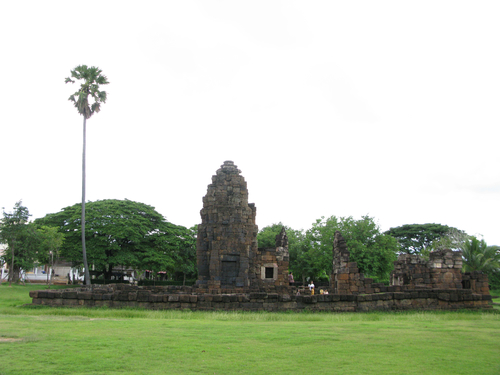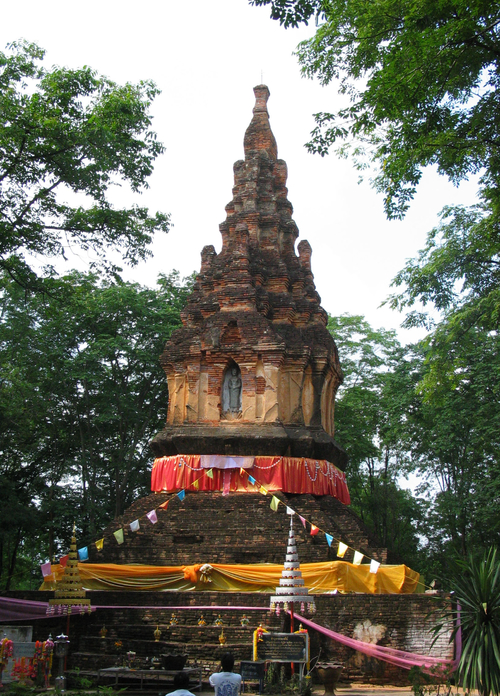ค้นหางานศิลปกรรม
ฐานข้อมูลศิลปกรรมในเอเชียตะวันออกเฉียงใต้
สถาปัตยกรรมปรางค์กู่
ปรางค์กู่เป็นโบราณสถานอีกแห่งหนึ่งที่มีแผนผังและลักษณะเหมือนกับโบราณสถานที่ได้พบหลักฐานว่าเป็นอโรคยาศาล ที่สร้างขึ้นในพุทธศตวรรษที่ 18 ก็คือ มีองค์ประธานอยู่ตรงกลาง 1 องค์ บรรณาลัยด้านหน้า 1 หลัง ล้อมด้วยกำแพงซึ่งมีโคปุระเฉพาะด้านหน้าทั้งหมด ก่อด้วยอิฐศิลาแลงยกเว้นกรอบประตูหน้าต่าง ทับหลัง เสาประดับล้วนเป็นหินทราย หันหน้าไปทางทิศตะวันออก ทิศตะวันออกเฉียงเหนือของปรางค์มีสระน้ำ 1 สระ ยังคงสภาพสมบูรณ์ โดยเฉพาะองค์ประธานซึ่งมีผังเป็นรูปสี่เหลี่ยมจัตุรัสขนาด 5 เมตร ย่อมุมไม้สิบสอง ด้านหน้ามีประตูทำเป็นมุขยื่นออกมา ผนังปรางค์อีก 3 ด้านเป็นประตูหลอก จำหลักภาพตรงกลางเป็นพระพุทธรูปประทับนั่งปางสมาธิ ซึ่งจับท่อนพวงมาลัยไว้ด้วยมือทั้งสองข้าง ด้านข้างทางซ้ายและขวาจำหลักรูปพระโพธิสัตว์อวโลกิเตศวร 4 กร กับรูปนางปรัชญาปารมิตา ด้านหน้ามีทับหลังเช่นกัน สันนิษฐานว่าสลักเป็นภาพเดียวกัน แต่ปัจจุบันลบเลือนมาก ที่ช่องประตูหลอกด้านทิศเหนือยังมีพระพุทธรูปศิลาปางสมาธิ ศิลปะแบบทวาราวดี ขนาดสูง 1.75 เมตร หน้าตักกว้าง 7.5 เมตร ประดิษฐานอยู่ 1 องค์ ซึ่งเป็นของที่เคลื่อนย้ายมาจากที่อื่น
สถาปัตยกรรมพระธาตุหนองสามหมื่น
เจดีย์อยู่ในผังเพิ่มมุม มีลายประทักษิณด้านล่างรองรับฐานสิงห์สองฐานต่อด้วยฐานบัวคว่ำบัวหงายคาดลูกแก้วอกไก่ 1 เส้น เรือนธาตุตกแต่งด้วยลายกาบบน-กาบล่าง มีการประดับพระพุทธรูปภายในซุ้ม เหนือขึ้นไปเป็นหลังคาลาด เรือนชั้นซ้อนมีการจำลองเรือนธาตุขึ้นไปและมีการเพิ่มปราสาทจำลองหรือยอดซุ้มเหนือหลังคาทั้ง 4 ด้าน ส่วนยอดเป็นเจดีย์ทรงระฆังสี่เหลี่ยม



